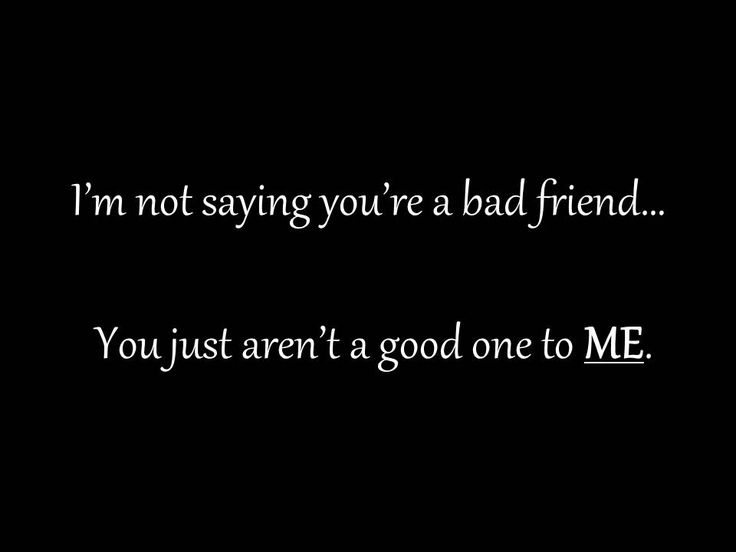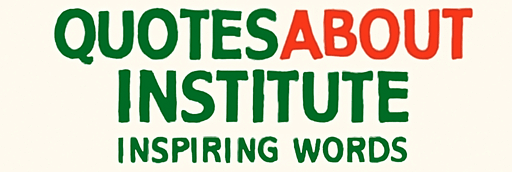
Decoding Subtlety: The Enduring Appeal of ‘Take a Hint’ Quotes
In the intricate dance of human interaction, where unspoken cues and subtle gestures often hold more weight than explicit declarations, the phrase “take a hint” serves as a bridge. It’s a gentle nudge, a playful jab, or sometimes a blunt warning, all wrapped in the concise elegance of two words. This article delves into the fascinating world of “take a hint” quotes, exploring their origins, their prevalence in popular culture, and the underlying reasons for their enduring appeal. We’ll examine how these quotes, often humorous and insightful, offer a clever way to navigate the complexities of social dynamics, providing both amusement and a touch of self-reflection.
The essence of a “take a hint” quote lies in its ability to convey a message without being overtly confrontational. It’s the art of suggestion, the skillful application of indirect communication. Whether it’s a witty one-liner, a sarcastic observation, or a poignant expression of frustration, these quotes tap into our innate understanding of social cues and unspoken expectations. They offer a glimpse into the hidden layers of communication, where the unsaid often speaks volumes.
The Origins and Evolution of Indirect Communication
The desire to “take a hint” is as old as human interaction itself. Before the advent of formal education and etiquette manuals, social navigation relied heavily on observation, imitation, and the interpretation of subtle signals. The ability to decipher these cues – to understand the unspoken – was crucial for survival and social cohesion. The earliest examples of “take a hint” sentiments likely manifested in folklore, proverbs, and cautionary tales, passed down through generations to teach social graces and warn against transgressions.
As societies evolved, so did the sophistication of indirect communication. The rise of courtly manners, literary devices, and artistic expression provided new avenues for conveying subtle messages. Playwrights and novelists, in particular, became masters of the “take a hint” technique, using dialogue, symbolism, and character interactions to explore the nuances of human relationships and social dynamics. These works helped to codify acceptable social behavior and highlighted the consequences of ignoring the subtle cues.
“Take a Hint” Quotes in Popular Culture
The 20th and 21st centuries have witnessed an explosion of “take a hint” quotes in popular culture. Television, film, music, and social media have become fertile ground for the cultivation and dissemination of these pithy expressions. The rise of sitcoms and romantic comedies, in particular, has provided a platform for showcasing the wit and humor inherent in indirect communication. Characters often use these quotes to deflect unwanted advances, express their displeasure, or gently guide others toward a more desirable course of action.
Consider the iconic “take a hint” moments in classic films. A dismissive glance, a carefully chosen word, a well-timed sigh – these subtle cues often carry more weight than outright rejection. The audience, privy to the underlying dynamics, understands the unspoken message and derives satisfaction from the character’s cleverness or the unfolding drama. The quotes themselves, often humorous or sarcastic, become instantly quotable and ingrained in popular culture.
Social media has further amplified the reach and impact of “take a hint” quotes. Platforms like Twitter, Instagram, and TikTok have become breeding grounds for clever one-liners and witty observations. Users share these quotes, often accompanied by memes or humorous images, to express their feelings, comment on social trends, or simply entertain their followers. The speed and scale of this dissemination have solidified the status of “take a hint” quotes as a ubiquitous form of modern communication.
The Psychological Appeal of Indirect Communication
The enduring popularity of “take a hint” quotes stems from a variety of psychological factors. Firstly, they offer a safe and indirect way to express oneself. Avoiding direct confrontation can be a valuable social skill, allowing individuals to navigate difficult situations without escalating conflict. These quotes provide a buffer, a way to deliver a message without causing offense or damaging relationships. They allow for a level of plausible deniability, enabling the speaker to retreat if their message is misunderstood or rejected.
Secondly, “take a hint” quotes tap into our innate desire for social harmony. Humans are social creatures, and we are wired to seek acceptance and avoid rejection. Indirect communication allows us to express our needs and desires while minimizing the risk of social ostracism. By using subtle cues, we can gauge the reaction of others and adjust our behavior accordingly. This creates a more fluid and adaptable social environment, where misunderstandings are less likely to lead to outright conflict.
Thirdly, these quotes often provide a sense of intellectual satisfaction. The ability to decipher hidden meanings and understand subtle cues is a cognitive skill that we all possess. Recognizing the cleverness of a “take a hint” quote, or understanding the implied message, gives us a sense of accomplishment and intellectual superiority. It’s a subtle form of mental exercise, a game of wit and deduction that we enjoy playing.
Examples of Memorable “Take a Hint” Quotes
The world is full of fantastic “take a hint” quotes. Here are a few examples to illustrate the range and impact of this form of expression:
- “I’m not saying I hate you, but I would unplug your life support to charge my phone.” – This quote, often found on social media, uses hyperbole and dark humor to express a strong dislike.
- “I’m not always sarcastic. Sometimes I’m sleeping.” – This quote plays on the common perception of sarcasm, using self-deprecating humor to deflect criticism.
- “I’m not sure what part of ‘no’ you don’t understand.” – A more direct quote, this one clearly states the speaker’s boundaries.
- “I’m not saying you’re stupid, but it takes you a while to get the obvious.” – This quote uses a clever combination of flattery and insult to deliver its message.
How to Use “Take a Hint” Quotes Effectively
While “take a hint” quotes can be humorous and effective, it’s important to use them judiciously. Overuse can make you appear passive-aggressive or immature. The key is to choose the right quote for the right situation and to deliver it with the appropriate tone. Consider the following guidelines:
- Know your audience: Consider the personality and relationship you have with the person you are addressing. A sarcastic quote might be appropriate for a close friend but could be perceived as rude to a colleague or stranger.
- Choose the right tone: The tone of your delivery is crucial. A playful or humorous tone can soften the impact of the quote, while a serious tone can convey a more direct message.
- Be mindful of context: Consider the context of the conversation or situation. A “take a hint” quote might be appropriate in a lighthearted setting, but could be misinterpreted in a serious one.
- Use them sparingly: Avoid relying on these quotes as your primary form of communication. They are most effective when used occasionally and strategically.
- Consider the alternatives: Sometimes, a direct and honest conversation is the best approach. Evaluate whether a “take a hint” quote is truly the most effective way to communicate your message.
The Future of Indirect Communication and “Take a Hint” Quotes
As technology continues to shape our interactions, the landscape of communication is constantly evolving. Social media platforms and online communities offer new opportunities for the creation and dissemination of “take a hint” quotes. The rise of visual communication, such as memes and GIFs, will likely further enhance the power of these subtle expressions.
The ability to understand and interpret these quotes will remain a valuable social skill. As humans, we will continue to seek ways to navigate the complexities of relationships and social dynamics. Therefore, the appeal of “take a hint” quotes will likely endure, serving as a witty and effective tool for expressing ourselves and understanding the world around us. “Take a hint” quotes, in their clever and concise form, will continue to resonate with audiences for years to come.
Understanding the nuances behind these quotes is a skill. Being able to recognize the subtle cues, the hidden meanings, and the unspoken messages requires a level of social intelligence. The ability to both deliver and understand these quotes allows for a more nuanced and engaging form of communication. The ability to quickly “take a hint” is often a sign of intelligence and social awareness.
The power of “take a hint” quotes lies in their ability to communicate a message with a degree of subtlety, avoiding direct confrontation. Whether it’s a witty observation, a gentle rebuke, or a playful jab, these quotes offer a clever way to navigate the complexities of human interaction. They provide a layer of deniability, allowing the speaker to express their feelings without necessarily causing offense. This makes them a versatile tool in a variety of social settings.
The use of “take a hint” quotes is not just about expressing frustration or displeasure. They can also be used to set boundaries, communicate preferences, or even offer encouragement. The key is to use them appropriately, considering the context of the situation and the relationship with the person you are addressing. When used correctly, these quotes can be a powerful and effective way to communicate without being overly aggressive or direct.
The use of “take a hint” quotes is pervasive across cultures and languages, demonstrating their universal appeal. This universal appeal is due to the human need to navigate social situations with grace and diplomacy. These quotes provide a way to communicate our needs and desires while minimizing the risk of social conflict. The ability to “take a hint” is a valuable skill in any culture.
The next time you encounter a “take a hint” quote, take a moment to appreciate its cleverness and the subtle message it conveys. It’s a testament to the enduring power of indirect communication and the human capacity for wit and social awareness. The phrase “take a hint” is a reminder that sometimes, the most effective communication is the one that’s not explicitly stated.
The popularity of “take a hint” quotes is a testament to the human desire for nuanced communication. These quotes offer a way to express oneself without resorting to bluntness, allowing for a more subtle and often more effective form of communication. The ability to both understand and utilize “take a hint” quotes is a valuable social skill in navigating the complexities of human interaction. The prevalence of “take a hint” quotes in modern media underscores their continued relevance.
This article explored the origins, prevalence, and psychological appeal of “take a hint” quotes. We looked at the role of these quotes in social dynamics, the importance of indirect communication, and provided examples of memorable quotes. Remember to use these quotes wisely and always consider your audience. Understanding the subtle art of the “take a hint” is a skill that can enhance both your communication and your social awareness. “Take a hint” quotes are here to stay.
[See also: The Art of Sarcasm: Using Wit to Connect and Communicate, Decoding Social Cues: How to Read Between the Lines, How to Handle Difficult Conversations with Grace]

